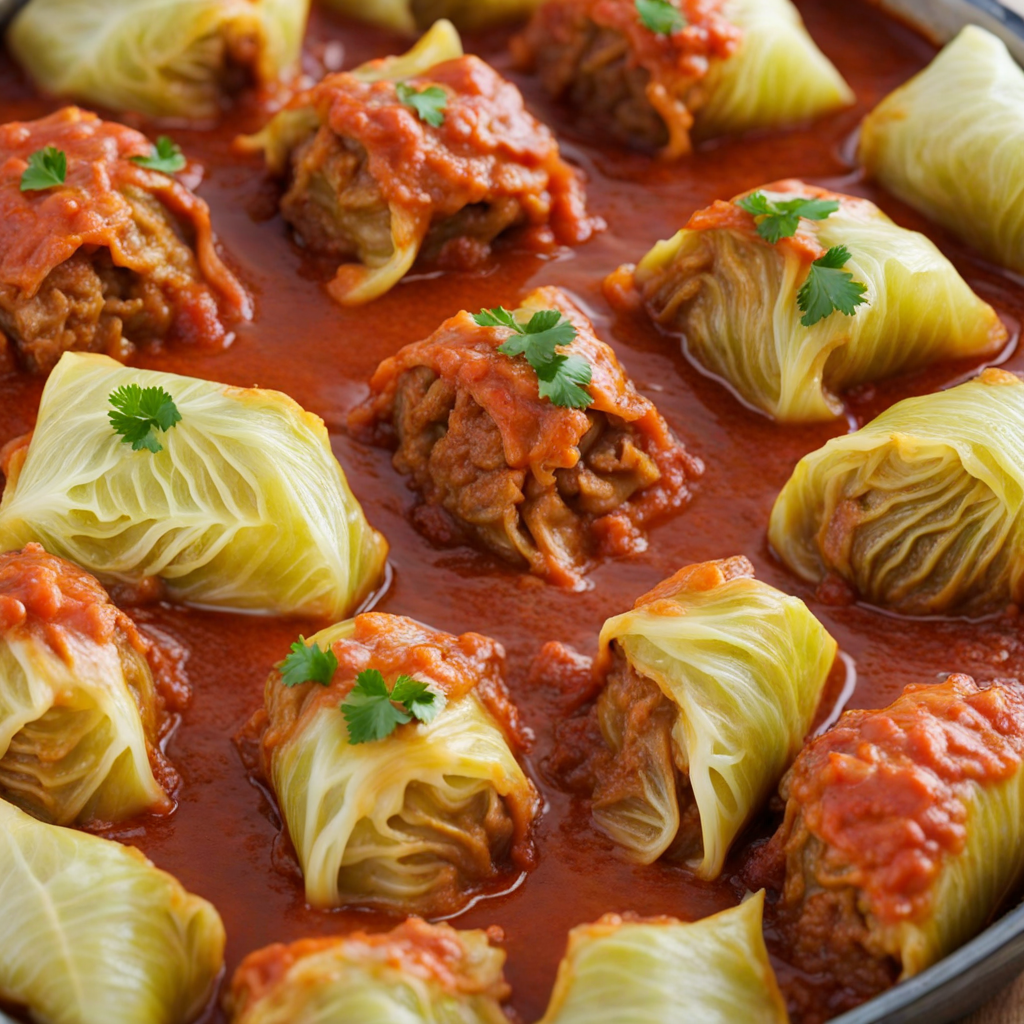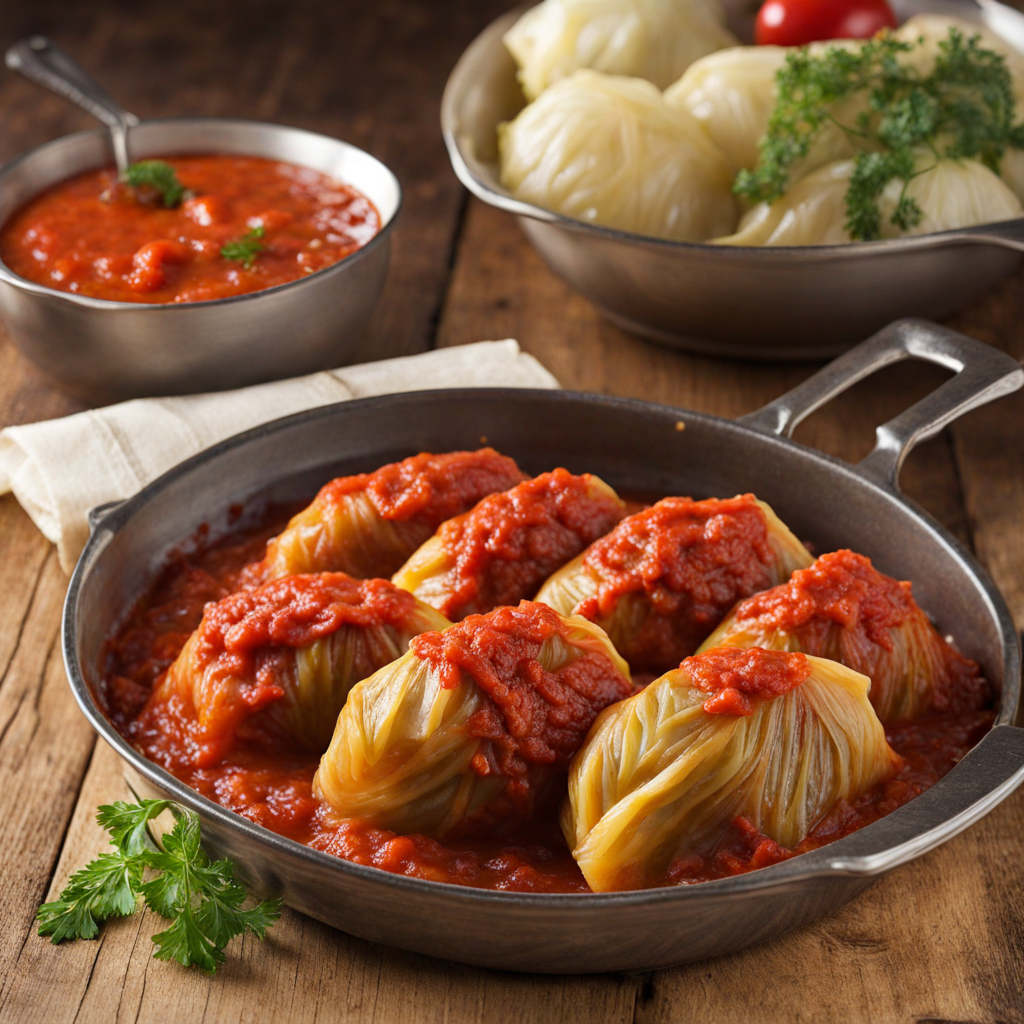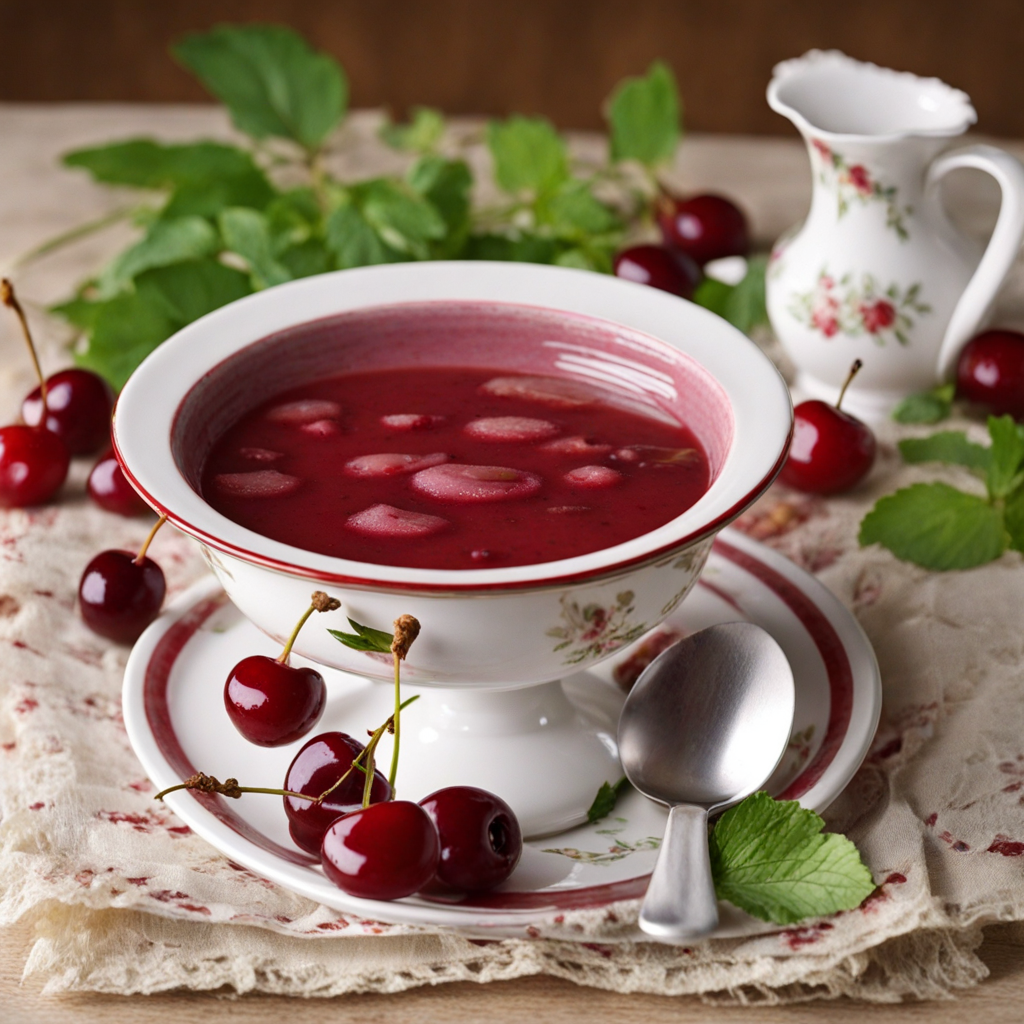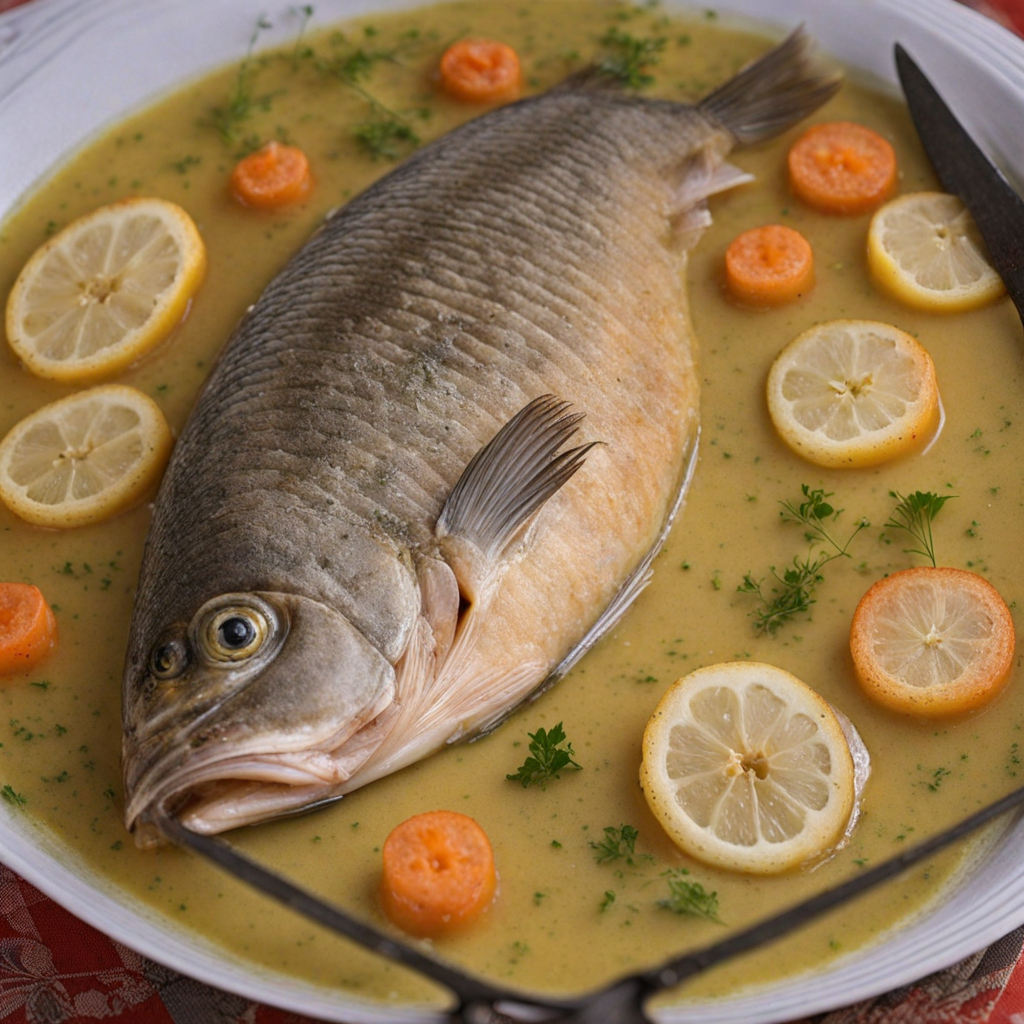Stuffed Cabbage
Stuffed cabbage, or 'töltött káposzta' in Hungarian, is a delightful dish that showcases the rich culinary heritage of Hungary. This comfort food features tender cabbage leaves filled with a savory mixture of ground meat—typically pork or beef—combined with rice, onions, and an array of spices. The cabbage leaves are blanched to soften them, making them pliable for wrapping around the filling. Each roll is then neatly tucked in, creating a compact package that is both visually appealing and bursting with flavor. The stuffed cabbage rolls are traditionally simmered in a hearty tomato-based sauce, which enhances their taste and infuses the dish with a rich, tangy flavor. The simmering process allows the stuffed cabbage to absorb the sauce, resulting in a succulent and aromatic meal. Often, the dish is enhanced with smoked paprika, which adds a warm, smoky depth that is characteristic of Hungarian cuisine. Some variations may even incorporate sauerkraut or additional vegetables, adding layers of texture and taste. Served hot, stuffed cabbage is typically accompanied by a dollop of sour cream, which adds a creamy contrast to the dish's robust flavors. It’s not just a meal; it's a celebration of comfort, warmth, and home-cooked goodness that brings families together. Whether enjoyed at a festive gathering or as a cozy weeknight dinner, stuffed cabbage reflects the heart of Hungarian culinary traditions, inviting anyone who tries it to experience a taste of Hungary.
How It Became This Dish
Töltött Káposzta: A Culinary Journey through Hungary’s History Töltött káposzta, or stuffed cabbage, is a beloved dish in Hungary that embodies the rich tapestry of the country’s culinary traditions. This hearty meal is more than just a comforting dish; it encapsulates centuries of cultural evolution, showcasing Hungary's agricultural bounty, hospitality, and the intricate interplay of flavors that reflect its diverse history. #### Origins and Early History The roots of töltött káposzta can be traced back to the early 18th century, when cabbage was introduced to Hungary from the Mediterranean region. Cabbage itself has ancient origins, with evidence of its cultivation dating back to the time of the ancient Egyptians. However, it was in Hungary that cabbage became a staple due to its hardiness and ability to thrive in the colder climate of Central Europe. The practice of stuffing vegetables has a long history across many cultures, with variations found in Middle Eastern, Mediterranean, and Eastern European cuisines. In Hungary, the tradition of wrapping seasoned meat and rice in cabbage leaves evolved, likely influenced by both Ottoman and Austrian culinary practices, as well as by the local population’s resourcefulness in utilizing available ingredients. #### Cultural Significance Töltött káposzta is not merely a dish; it represents a connection to family, tradition, and national identity. It often graces tables during significant celebrations, particularly during Christmas and New Year's, where it symbolizes prosperity and abundance for the coming year. The act of preparing this dish often brings families together, as multiple generations gather to share recipes, techniques, and stories, reinforcing bonds and cultural heritage. The dish also plays a role in Hungarian folklore. It is said that the first bite of töltött káposzta on New Year's Day brings good luck, a belief that highlights the dish's importance in rituals and celebrations. Its presence at feasts and gatherings is a testament to the Hungarian spirit of hospitality, where food serves as a means to foster connections, express love, and celebrate life’s milestones. #### Ingredients and Preparation At its core, töltött káposzta consists of fermented cabbage leaves filled with a mixture of minced meat (usually pork, beef, or a combination of both), rice, and a medley of spices, including paprika, salt, and pepper. The use of fermented cabbage, known as "sauerkraut," not only adds a distinctive tangy flavor but also reflects the region's preservation methods, which were crucial for survival during harsh winters. The preparation of töltött káposzta is an intricate process that varies from family to family. Traditionally, the leaves are blanched to soften them before being filled. The filling is seasoned differently depending on personal preferences, with some families adding smoked paprika or even a spoonful of sour cream for richness. The stuffed leaves are then rolled tightly, placed in a pot, and simmered slowly, often with additional sauerkraut, smoked meats, or spices to enhance the flavor. In recent times, vegetarian versions of töltött káposzta have emerged, reflecting a growing trend towards plant-based diets. These adaptations typically use grains, lentils, or mushrooms as the filling, demonstrating the dish's versatility while maintaining its essence. #### Evolution Through the Ages Töltött káposzta has undergone significant evolution throughout Hungary’s history, influenced by various socio-political changes. The Austro-Hungarian Empire, for instance, played a vital role in shaping the culinary landscape of Hungary. Influences from neighboring regions, including Slovakia, Romania, and Serbia, can be seen in the spices and cooking techniques used in different variations of the dish. During the 20th century, particularly after World War II, the dish became a staple in Hungarian households, symbolizing comfort and sustenance during difficult times. The post-war years saw a shift in eating habits, as urbanization brought about new culinary practices. Yet, töltött káposzta remained a cherished dish, often prepared in large batches to feed families and friends. With the advent of globalization, Hungarian cuisine, including töltött káposzta, began to gain recognition on the international stage. Chefs and food enthusiasts started exploring and celebrating traditional dishes, leading to a revival of interest in local recipes. This newfound appreciation has opened up avenues for gastronomic tourism, where visitors to Hungary seek out authentic experiences, often centered around traditional foods like töltött káposzta. #### Modern-Day Töltött Káposzta Today, töltött káposzta is firmly established as a symbol of Hungarian culinary identity. It is commonly found in restaurants, at festive gatherings, and in homes across the nation. The dish has also made its way into the diaspora, where Hungarian communities around the world continue to prepare and enjoy it, preserving their heritage and passing down the tradition to future generations. Modern interpretations of töltött káposzta can include innovative twists, such as fusion with other cuisines or the incorporation of contemporary cooking methods. Yet, the essence of the dish remains unchanged: it is a labor of love that brings people together, often serving as a reminder of home for those living abroad. In recent years, there has been a growing emphasis on sustainability and local sourcing in the culinary world, prompting many chefs to return to traditional ingredients and methods. This movement has further solidified the place of töltött káposzta in the modern culinary landscape, highlighting the importance of heritage and authenticity in cooking. #### Conclusion Töltött káposzta is far more than just a delicious dish; it is a profound expression of Hungary’s cultural identity, reflecting its history, traditions, and the resilience of its people. From its humble origins as a way to utilize local ingredients to its status as a cherished national dish, töltött káposzta embodies the heart and soul of Hungarian cuisine. As generations continue to roll, fill, and serve this beloved meal, it remains a testament to the enduring power of food to connect us to our past while nourishing our present and future.
You may like
Discover local flavors from Hungary







